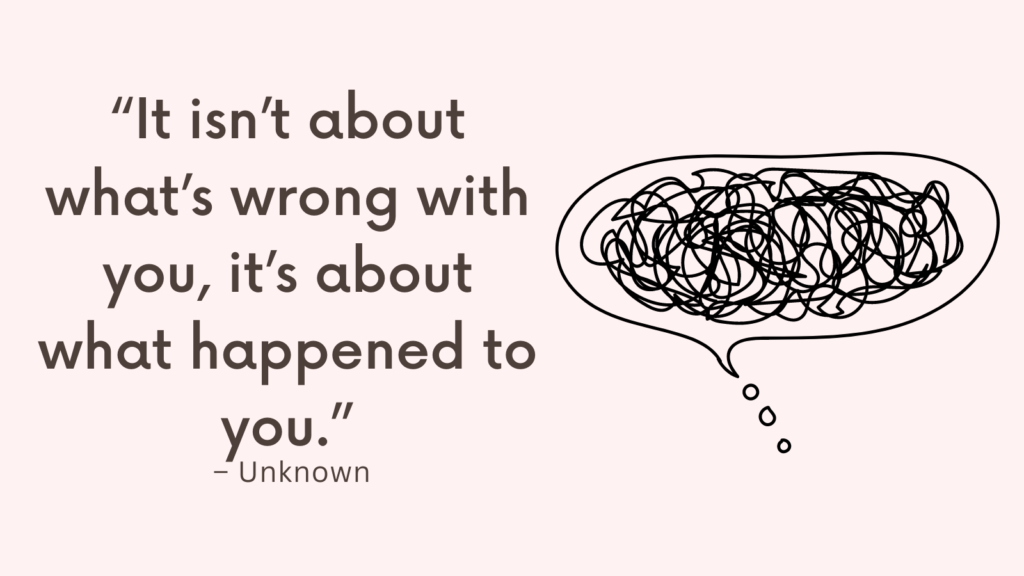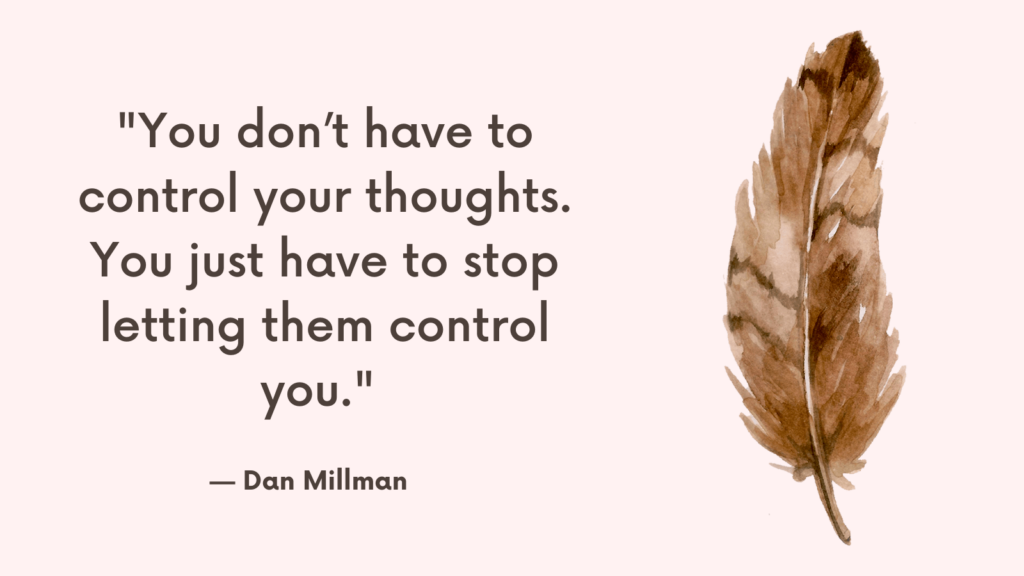This post contains emotional dysregulation test along with helpful ways to regulate your emotions.
What Is Emotional Dysregulation?
Emotional dysregulation refers to difficulties in managing and controlling emotions effectively.
It involves experiencing intense and often overwhelming emotional states that are difficult to regulate or modulate.
Individuals with emotional dysregulation may struggle to manage their emotions in a way that is appropriate to the given situation, leading to difficulties in their personal relationships, work, and overall well-being.
It’s important to note that emotional dysregulation can be associated with various mental health conditions, including borderline personality disorder (BPD), post-traumatic stress disorder (PTSD), bipolar disorder, and some mood disorders.
However, emotional dysregulation can also exist as a standalone difficulty without being tied to a specific diagnosis.
Related: Dysregulated Nervous System: Top 9 Signs & How to Heal
Emotional Dysregulation Test
Results
#1. Do you often find yourself feeling overwhelmed or unable to control your emotions?
#2. Are there specific triggers or situations that consistently provoke intense emotional reactions?
#3. Do you have trouble identifying and labeling your emotions accurately?
#4. Are your emotional reactions disproportionate to the situation at hand?
#5. Do you frequently experience rapid shifts in mood?
#6. Have others expressed concern about your emotional responses or behavior?
We will not sell your information. All results are kept confidential.
This quiz is for informational purposes only. It is not meant as a diagnostic or assessment tool.
Results
The questions above represent common signs of emotional dysregulation. If you answered yes to most of these questions, then you may be emotionally dysregulated.
Related: How To Feel Your Feelings? Top 9 Difficult Emotions To Cope With In Healthy Ways
Signs of Emotional Dysregulation
Recognizing the signs of emotional dysregulation is crucial in understanding and addressing this challenge.
While individuals may experience emotional dysregulation differently, here are some common signs to look out for:
1. Intense Emotional Reactivity
People struggling with emotional dysregulation may exhibit exaggerated or intense emotional reactions to seemingly minor triggers.
They might frequently experience feelings of anger, sadness, fear, or irritability that are disproportional to the situation.
2. Difficulty in Modulating Emotions
Individuals with emotional dysregulation often struggle to control or modulate their emotional responses.
They may find it challenging to calm themselves down once they have become upset or overwhelmed by emotions, even when they recognize the feelings as excessive or irrational.
3. Mood Swings
Frequent and rapid shifts in mood are common among those experiencing emotional dysregulation.
These mood swings can occur within short periods, sometimes even within minutes or hours.
The individual may go from feeling elated or happy to suddenly becoming depressed, irritable, or anxious.
Related: Best 99 Coping Skills (+FREE Coping Worksheets)
4. Impulsivity
Impulsive behaviors, such as reckless spending, substance abuse, binge eating, or self-harm, are often associated with emotional dysregulation.
The individual may engage in impulsive acts as a way to cope with overwhelming emotions or to seek immediate relief from distress.
5. Difficulty in Recovering from Setbacks
Emotional dysregulation can make it challenging for individuals to bounce back from setbacks or disappointments.
They may have difficulty recovering from stressful events, dwelling on negative experiences, and struggling to adapt to new situations.
6. Fear of Abandonment
Many individuals with emotional dysregulation struggle with a persistent fear of being abandoned or rejected.
This fear can drive them to engage in desperate or clingy behaviors to avoid perceived abandonment, which can further strain relationships.
Related: How To Heal Abandonment Issues? Top 15 Powerful Strategies For Fear of Abandonment Healing
7. Suicidal Ideation or Self-Harm
In severe cases, emotional dysregulation may lead to thoughts of self-harm or suicidal ideation.
These thoughts can emerge during moments of extreme emotional distress as a desperate attempt to escape the overwhelming feelings.
9. Dissociation or Numbing
Some people experiencing emotional dysregulation may dissociate or disconnect from their emotions as a coping mechanism.
They may feel emotionally numb or detached from their own experiences, leading to difficulties in identifying and expressing emotions.
It’s important to remember that these signs are not exclusive to emotional dysregulation and can also be present in other mental health conditions.
Related: Best 11 Grounding Techniques For Dissociation

Causes of Emotional Dysregulation
Emotional dysregulation can have various causes and contributing factors.
It’s important to recognize that each individual’s experience may differ, and the reasons for emotional dysregulation can be complex and multifaceted.
The following are some common factors that can contribute to emotional dysregulation:
1. Biological Factors
Research suggests that biological factors play a role in emotional dysregulation. (source)
Genetic factors can influence an individual’s predisposition to experience intense emotions or have difficulties regulating them.
Neurotransmitter imbalances or dysfunction in areas of the brain responsible for emotion regulation, such as the prefrontal cortex and amygdala, can also contribute to emotional dysregulation.
2. Childhood Trauma
Experiences of abuse, neglect, or other forms of trauma during childhood can significantly impact emotional regulation abilities later in life.
Traumatic experiences can disrupt the development of brain regions involved in emotion regulation and increase vulnerability to emotional dysregulation.
Related: Best 15 Inner Child Exercises: How To Connect With Your Inner Child (& Heal Your Childhood Wounds)
3. Invalidating Environments
Growing up in an invalidating environment where one’s emotions are not acknowledged, understood, or validated can lead to emotional dysregulation.
When emotions are dismissed or criticized, individuals may develop difficulties in recognizing and regulating their own emotions, leading to emotional dysregulation.
4. Chronic Stress
Prolonged exposure to chronic stressors, such as ongoing work pressures, relationship difficulties, financial problems, or health issues, can overwhelm an individual’s ability to regulate emotions effectively.
Chronic stress activates the body’s stress response system, leading to heightened emotional reactivity and impaired emotion regulation capacities.
Related: Best 15 Stress Relief Toys For Your Wellbeing
5. Personality Traits
Certain personality traits may contribute to emotional dysregulation.
For example, individuals with high levels of neuroticism may be more prone to experiencing intense emotions and finding it challenging to regulate them effectively.
Additionally, traits like impulsivity or low frustration tolerance can further exacerbate emotional dysregulation.
6. Co-occurring Mental Health Disorders
Emotional dysregulation is commonly associated with several mental health conditions.
Conditions such as borderline personality disorder (BPD), bipolar disorder, attention-deficit/hyperactivity disorder (ADHD), and post-traumatic stress disorder (PTSD) often involve significant challenges in emotion regulation.
Related: Top 7 Skills For Coping With BPD [+ BPD FREE Resources]
7. Cognitive Factors
Distorted or maladaptive cognitive patterns can contribute to emotional dysregulation.
Negative self-beliefs, cognitive biases, or a tendency to catastrophize or magnify emotional events can intensify emotional reactivity and hinder effective emotion regulation strategies.
8. Lack of Coping Skills
Insufficiently developed or inadequate coping mechanisms to deal with stressors or intense emotions can contribute to emotional dysregulation.
If individuals lack adaptive strategies to manage their emotions, they may resort to ineffective coping mechanisms, such as avoidance, aggression, or self-harm, which further perpetuate emotional dysregulation.
It’s important to emphasize that these factors do not operate in isolation, and multiple factors often interact to contribute to emotional dysregulation.
The unique combination of individual experiences, biological predispositions, and environmental factors shapes an individual’s emotional regulation abilities.
Related: Best 8 Mindfulness Exercises For Adults That Will Help You Regulate Your Emotions
Coping Strategies for Emotional Dysregulation
Coping strategies can help individuals regulate their emotions, reduce distress, and improve their ability to cope with challenging situations.
Here are some evidence-based coping strategies that may be helpful:
#1. Mindfulness
Mindfulness practices, such as meditation, can help individuals cultivate present-moment awareness and non-judgmental acceptance of their emotions.
Regular practice of mindfulness techniques can enhance emotional self-regulation by increasing awareness of emotional triggers and providing space to respond rather than react impulsively.
Here’s a simple mindfulness exercise you can practice:
1. Find a comfortable and quiet space where you won’t be disturbed for a few minutes.
2. Sit in a relaxed yet upright position. You can choose to close your eyes or keep them open, whichever feels comfortable.
3. Begin by focusing on your breath. Take a deep breath in through your nose, allowing your stomach to rise as you fill your lungs with air. Then, exhale slowly through your mouth, noticing the sensation of your breath leaving your body.
4. Shift your attention to the physical sensations in your body. Notice any areas of tension or discomfort. Without judgment, simply observe these sensations.
5. Gradually expand your awareness to include your thoughts and emotions. Notice any thoughts that arise, without getting caught up in them. Allow them to come and go like passing clouds in the sky. Similarly, observe any emotions that emerge, acknowledging them without trying to analyze or change them.
6. If you find yourself becoming overwhelmed by a particular thought or emotion, gently redirect your attention back to your breath or physical sensations.
7. As you continue to practice, try to cultivate an attitude of curiosity, openness, and non-judgment towards your inner experiences.
8. When you’re ready, slowly bring your attention back to the present moment. Notice your surroundings, the sounds, and the sensations of your body sitting in the chair.
9. Take a moment to reflect on how you feel after the exercise. Notice any shifts or changes in your emotional state.
Related: Best 6 Mindfulness Exercises For Beginners (+FREE Resources)
#2. Labeling Your Emotion
Labeling emotions is a helpful technique for emotional regulation.
When we can accurately identify and label our emotions, it allows us to better understand and manage them.
Here’s how you can practice this technique:
1. Begin by bringing your attention to your present moment experience. Take a few deep breaths and tune in to how you’re feeling emotionally.
2. As you become aware of an emotion arising within you, mentally label it. For example, if you notice a sense of anger, you can say to yourself, “I am feeling angry.” If you’re experiencing sadness, you might say, “I am feeling sad.”
3. Try to be as specific as possible when labeling your emotions. For instance, instead of just saying “I’m upset,” you can delve deeper and say, “I’m feeling frustrated or disappointed.”
4. Once you’ve labeled the emotion, take a moment to observe it without judgment. Simply notice its presence and any physical sensations associated with it. Avoid getting entangled in the storyline or trying to change the emotion at this stage.
5. Remind yourself that emotions are temporary and that they will naturally pass. By acknowledging and accepting your emotions, you can create space for them to arise and dissipate on their own.
6. If the emotion feels overwhelming, you can engage in soothing self-talk or self-compassion. Offer yourself kind and reassuring words such as, “It’s okay to feel this way. Emotions are a normal part of being human.”
7. As you continue to practice labeling your emotions, you may start to notice patterns or triggers that contribute to certain emotional states. This awareness can help you develop strategies to manage and regulate your emotions more effectively.
Related: Top 21 Emotional Writing Prompts To Process Emotions
#3. Cognitive Restructuring
Cognitive restructuring involves identifying and challenging negative or irrational thoughts that contribute to emotional dysregulation.
By reframing unhelpful thoughts and replacing them with more realistic and positive ones, individuals can modify their emotional responses and reduce distress.
Here’s how you can apply cognitive restructuring in your everyday life:
1. Identify the thought: Pay attention to any automatic thoughts that arise when you experience an intense emotion. These thoughts are often quick and may be fueled by assumptions or biases.
2. Question the thought’s validity: Ask yourself if there’s any evidence to support or contradict the thought. Consider alternative explanations or perspectives that could challenge the accuracy of the thought.
For example, if your automatic thought is, “I’m a failure,” examine whether this thought is based on objective facts or if it’s a result of negative self-perception.
3. Evaluate the consequences of the thought: Reflect on how this thought affects your emotions and behaviors. Recognize any patterns that show how this thought may lead to distressing emotions. This step helps you realize the impact that thoughts can have on your well-being.
4. Generate alternative thoughts: Once you’ve identified the unhelpful thought, come up with more realistic and balanced alternatives. Consider other ways to interpret the situation that are less negative or self-critical.
For instance, instead of “I’m a failure,” you might reframe your thought to “I made a mistake, but I can learn from it and do better next time.”
5. Test the validity of alternative thoughts: Examine whether the alternative thoughts are more accurate and aligned with reality. Look for evidence that supports these new perspectives. This process can help you build a more balanced and rational view of yourself and the situation.
6. Repeat and reinforce: Practice using cognitive restructuring regularly. Over time, you’ll develop a habit of recognizing and challenging unhelpful thoughts. The more you engage in this process, the more natural it becomes to reframe and regulate your emotions effectively.
Related: What Causes Cognitive Distortions? (+Top 10 Common Cognitive Distortions & How To Challenge Them)
#4. Deep Breathing
Deep breathing activates the body’s relaxation response, helping to calm intense emotions.
Here’s a step-by-step guide to practicing deep breathing:
1. Find a quiet and comfortable place where you can sit or lie down. Close your eyes if that feels comfortable for you.
2. Take a slow, deep breath in through your nose, feeling your abdomen rise and expand as you fill your lungs with air. Count to four as you inhale.
3. Hold your breath for a moment, just for a second or two.
4. Exhale slowly through your mouth, counting to four again, allowing your abdomen to deflate as you release the air.
5. Pause for another moment before taking your next breath.
6. Repeat this cycle of deep breathing for several minutes, focusing your attention on the sensation of the breath as it enters and leaves your body.
During this practice, it’s normal for your mind to wander or for distracting thoughts to arise. If this happens, gently and without judgment, bring your focus back to your breath.
Engaging in deep breathing exercises regularly, even when you’re not experiencing intense emotions, can help you build resilience and develop a healthier response to stress.
Consider integrating deep breathing into your daily routine, setting aside dedicated time for relaxation and emotional well-being.
#5. Progressive Muscle Relaxation
Progressive Muscle Relaxation (PMR) is a relaxation technique that involves tensing and then relaxing different muscle groups in your body.
It can be helpful for reducing muscle tension and promoting overall relaxation, which in turn can help with emotional regulation.
Here’s a step-by-step guide to practicing PMR:
1. Find a quiet and comfortable place where you can sit or lie down. Close your eyes if that feels comfortable for you.
2. Start by taking a few deep breaths to relax your body and mind.
3. Begin with a specific muscle group, such as your hands or feet. Tense the muscles in that area as tightly as possible while still being comfortable. Hold the tension for about 5 to 10 seconds.
4. Release the tension abruptly and completely, letting go of any tightness or discomfort. Focus on the sensation of relaxation in that muscle group for 15 to 20 seconds.
5. Move on to the next muscle group, working your way through different parts of your body, such as your arms, shoulders, face, or legs.
6. As you progress, try to pay attention to the contrast between the tension and relaxation in each muscle group.
7. Continue this process, moving from one muscle group to another, until you have gone through your whole body.
PMR is a skill that may take some practice to fully benefit from. Regular practice can enhance your ability to recognize and release muscle tension, leading to improved emotional well-being.
Combining PMR with other techniques like deep breathing or mindfulness exercises can further enhance its effectiveness in emotional regulation.
Related: How To Stop Self-Critical Thoughts Using These Top 10 Techniques
#6. Self-Care and Stress Management
Engaging in self-care activities can help individuals manage stress and promote emotional well-being.
Finding activities that bring joy, relaxation, and fulfillment, such as exercise, hobbies, spending time with loved ones, or practicing self-compassion, can alleviate emotional dysregulation.
#7. Social Support
Maintaining a strong support network is important for managing emotional dysregulation.
Sharing feelings and seeking support from trusted friends, family members, or support groups can provide validation, understanding, and practical guidance during emotionally challenging times.
#8. Healthy Lifestyle Choices
Prioritizing healthy lifestyle choices can have a positive impact on emotional regulation.
Adequate sleep, regular physical activity, nutritious diet, and limiting substances like alcohol and caffeine can all contribute to better emotional well-being.
Related: Top 45 Self Care Day Ideas at Home To Kickstart Your Self Care Ritual

Conclusion
Emotional dysregulation can significantly impact daily functioning. It may lead to problems in relationships, impulsive or self-destructive behaviors, difficulty coping with stress, low self-esteem, and disrupted overall well-being.
However, with proper treatment and support, emotional dysregulation can be improved. Learning and practicing specific techniques to regulate emotions, developing coping skills, and addressing underlying issues can help individuals better manage their emotional responses over time.







